Keywords are the most important part of SEO, and they should never be overlooked. Today I’m going to show you how to perform free keyword research using Google keyword tools.
After Google launched in 1998, by the early 2000s, keyword stuffing, and link building were the major focus for websites that wanted to rank well on the SERPs (search engine results pages).
Back then, SEO was mostly about spammy links and keyword stuffing. Folks didn’t care about the things that matter today such as user experience, high-quality content, quality link building, etc.
But all that changed after Google made sophisticated adjustments to its algorithms. SEOs were forced to become good Internet marketers, and as search engine algorithms became even more advanced, SEO evolved into a full-fledged marketing discipline.
But even though SEO has changed a lot over the years, the two primary success factors are still keywords and backlinks. Those parts haven’t really changed; they only became more complex to do properly.
The Biggest Mistake People Make With Keywords
Guessing. We’ve all done it in school at some point in our lives, right? When presented with multiple-choice questions that we don’t know the answers to, we guess and hope for the best. After all, it’s not like we were allowed to take a peak in our textbooks. Wait… is that a thing now? Or maybe I’m just getting old.
In any case, when it comes to keywords, guessing can spell doom, and sadly that’s what plenty of people do!
The combination of words that consumers use to find our products is often not what we initially think. This is why we need to do our research. Since I’m not a huge fan of completely relying on specialty tools, I’m going to show you how to do keyword research for free without them. But we’ll discuss tools later on in the training because they’re still important and highly useful.
Google, Bing, and Yahoo make it really easy for us to identify potential keyword targets. And it’s not surprising either. After all, they need us to produce content so that their users can keep coming back.
How to Do Free Keyword Research With Google
Hypothetical Scenario: You’re a chiropractor in Richmond, British Columbia. You’ve just opened your store to the public and in general, you’re seeing some business coming from passerby traffic. But you want to increase revenues by tapping into the online marketplace.
Note: Do the following step in secret mode. This is because when you’re logged in to the search engine, it’ll use your search history, location and possibly other factors to personalize your search. By using private mode, you’ll eliminate almost all personalization.
To access secret mode, go to the top right-hand corner of your browser and click the hamburger icon. In there, you’ll find an option for private or incognito mode. Here’s how it looks on Google Chrome:
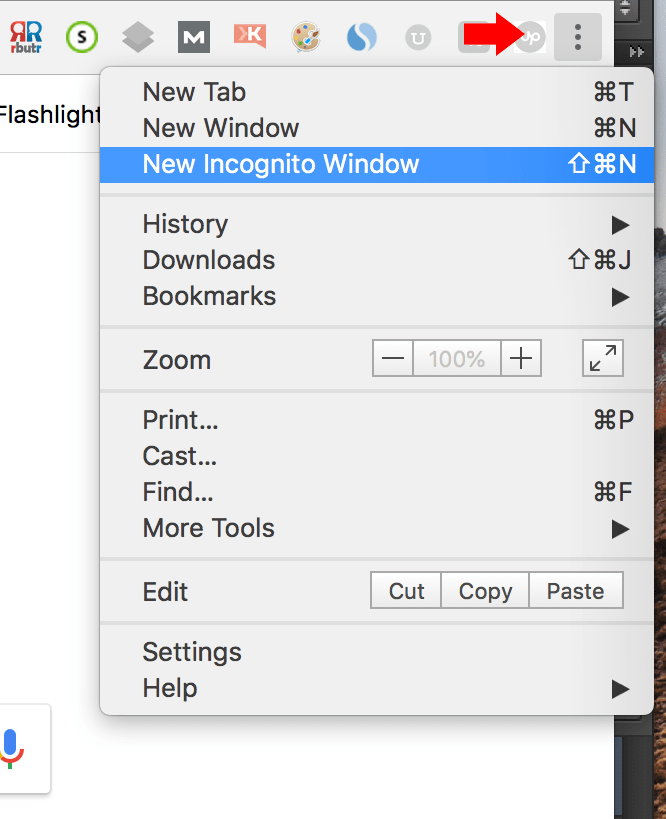
We’ll need Google’s keyword planner and Google search.
First, head over to Google and search for “chiropractor Richmond”. When you scroll all the way to the bottom of the SERP, you’ll find the subheading, ‘Searches related to’.
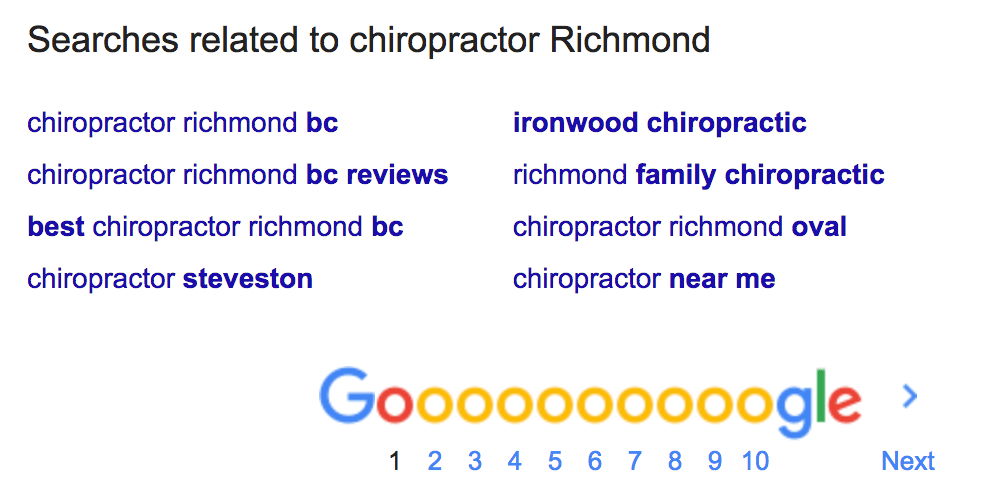
These are search queries that people regularly use to find your product or service. If you click on any one of those keywords, Google will perform a search on it. And if you scroll down to the bottom again, you’ll get more related searches. Repeat and look for other words that people use to find your kind of business.
As you’ve probably noticed, there are no other immediate words that stand out other than Chiropractor. However, there may still be other ways consumers refer to what you do. So head over to Thesaurus and look for synonyms of your main word.
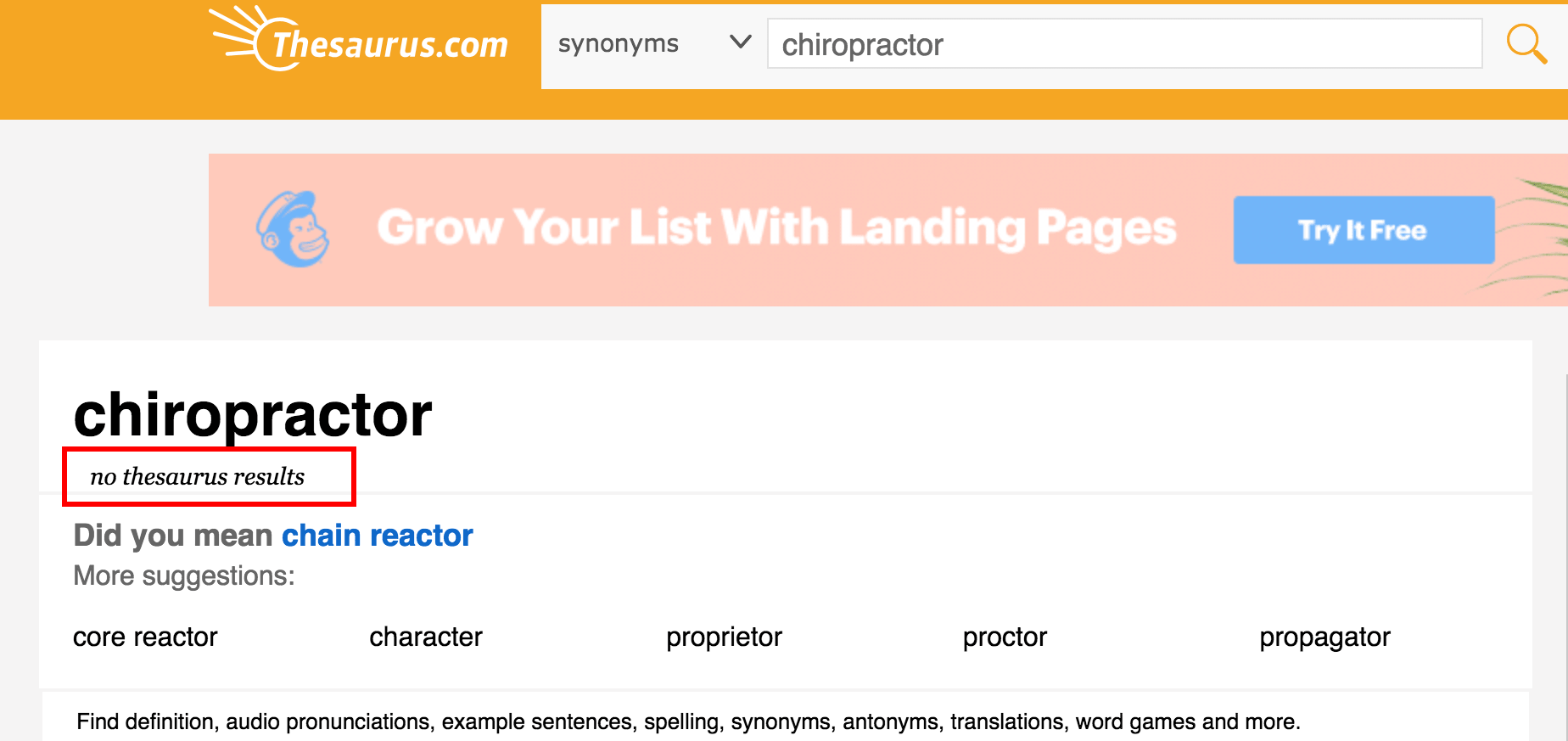
As you can see on the screenshot above, there are no other words that come up. For someone who’s looking for a blog post topic idea, ‘searches related to’ may be enough, but we want to find the most profitable phrases to target.
Next, visit Google’s keyword planner. You’ll need to signup with your Gmail for an Adwords account. After you’ve registered, if you don’t immediately see the keyword planner, then look for ‘tools’ in the top right corner. Under ‘tools’, select ‘Keyword Planner.
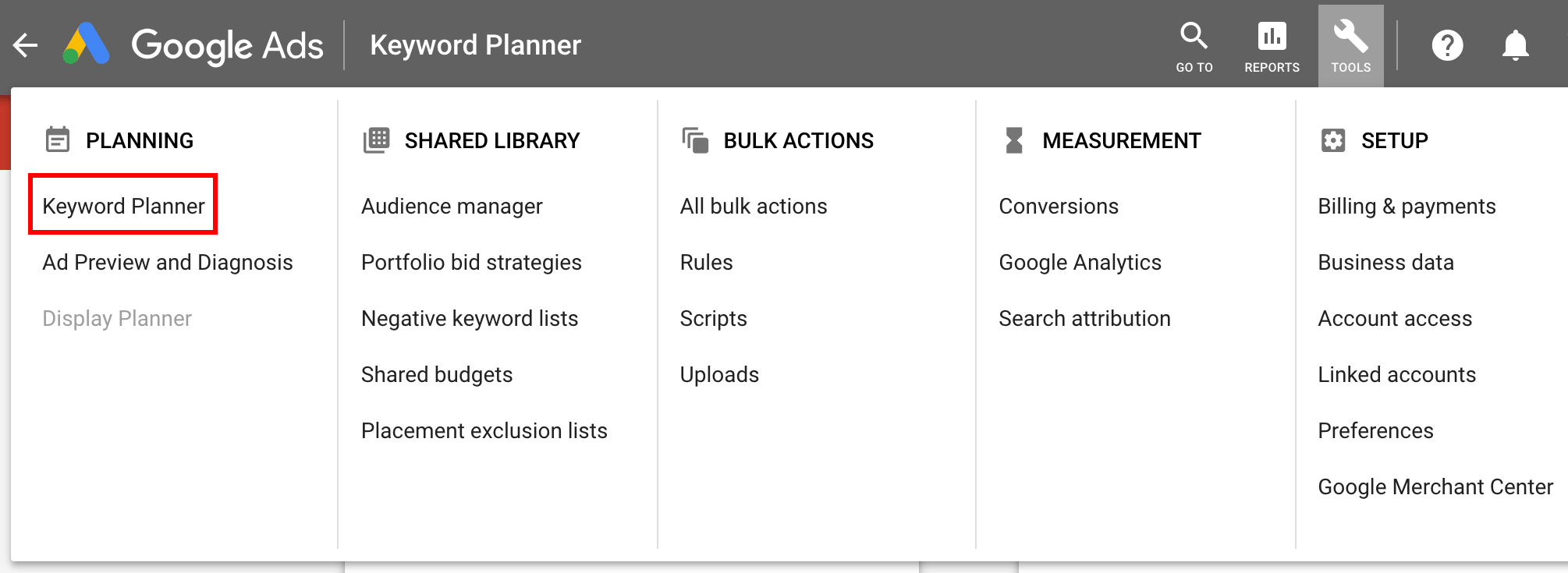
You’ll arrive at a web page with two options like so:

Select the one labelled ‘find new keywords’. On the entry box, enter your word and hit ‘get started’. Note that if you have multiple words, you can separate them with commas.
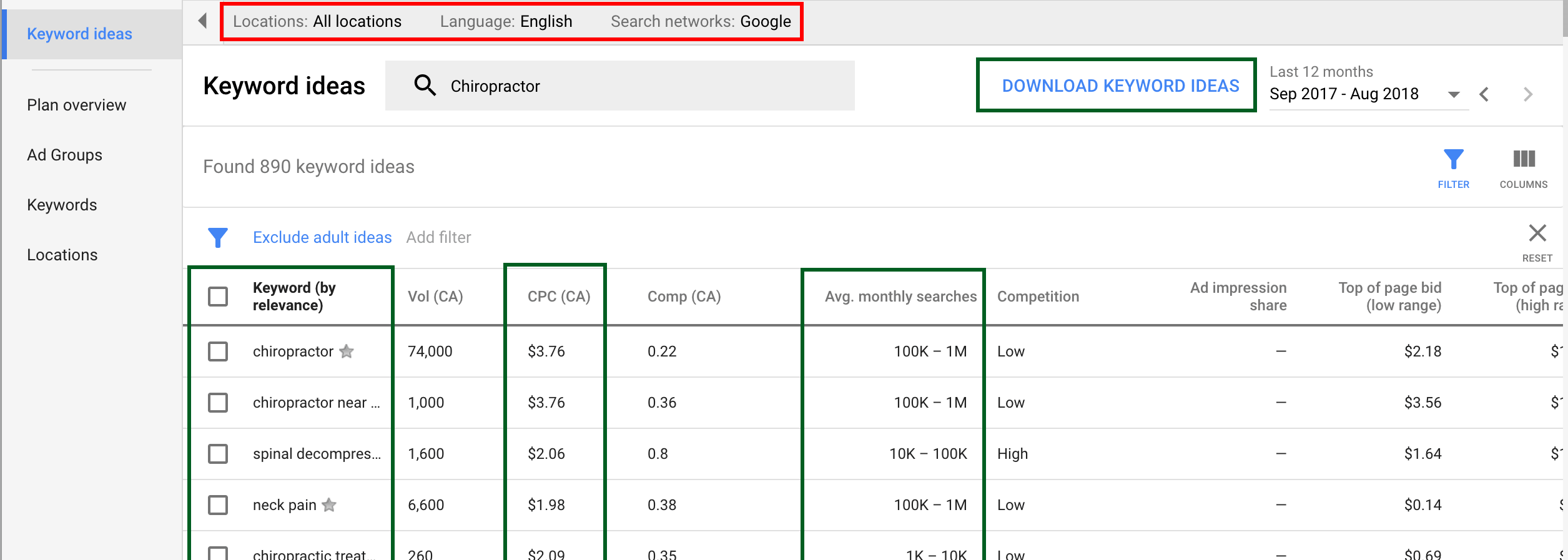
On the screenshot above, I’ve highlighted some important areas that you should pay attention to. Let’s go over each section on the sheet.
Location, Language, and Search Networks
You’ll need to specify a location, except for when you’re globally targeting users. You must also specify a language, but your network should always be set to ‘Google’ unless you’re planning to market with PPC (pay-per-click).
To edit any of the options, just click on them, and a new box will pop up. It’s pretty straightforward from there on out.
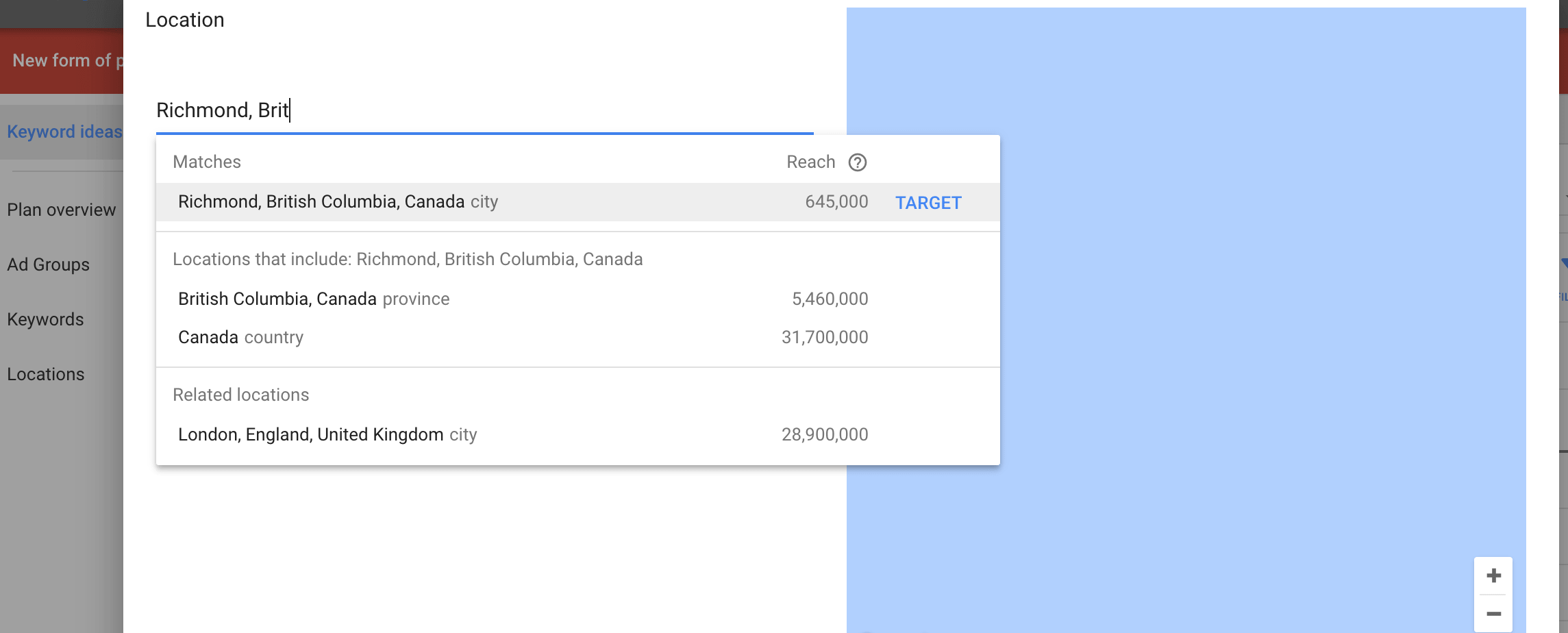
Once you have your location, language, and network setup, you’ll gain access to location-specific data.
Download Keyword Ideas
Use the ‘download keyword ideas’ option to download all the keywords in CSV format and export them into Excel. This is advisable and recommended because it’s the best way to sort keywords by importance, as well as remove unwanted queries.
Keyword (by relevance)
In the section labeled ‘Keyword (by relevance),’ you’ll find a list of all the possible keywords that you can use.
CPC
‘CPC’ or cost-per-click refers to how much you would need to bid if you were using pay-per-click (PPC) advertising. But this course is about SEO, not PPC, although they can be combined with marketing campaigns.
The cost of a particular keyword is a good indicator of its SEO value. In other words, the higher the CPC on a given query, the greater the potential ROI. This is because businesses don’t generally bid on keywords for long that aren’t leading to sales.
Average Monthly Searches
The ‘Avg. Monthly Searches’ column is where you’ll find the estimated average monthly search volume for each keyword.
Important Notes
You’ll need to play around with the keyword tool and explore its possibilities, but these are the main areas you’ll need for SEO purposes.
Old-fashioned brainstorming still works but don’t rely on it alone. While it’s recommended that you brainstorm on paper or, perhaps, a digital notepad, make sure you run them through Keyword Planner. You don’t want to guess, and very often, the words people use online when referring to a product can differ slightly.
Make sure that you’re using keywords within your site’s pages. It’s one keyword per page, but make use of variations/synonyms. We’ll cover how to do this properly later in the course.
Stay tuned and watch your inbox for notifications.
Watch the free keyword research video training
I’m a freelance copywriter and SEO specialist. I aim to empower individuals and businesses with impactful marketing solutions and insights. In my downtime, I recharge by embracing the beauty of nature or cherishing moments with my loved ones. If you found value in this post, please consider sharing it.
Want a heads-up whenever a new article drops? Subscribe here





